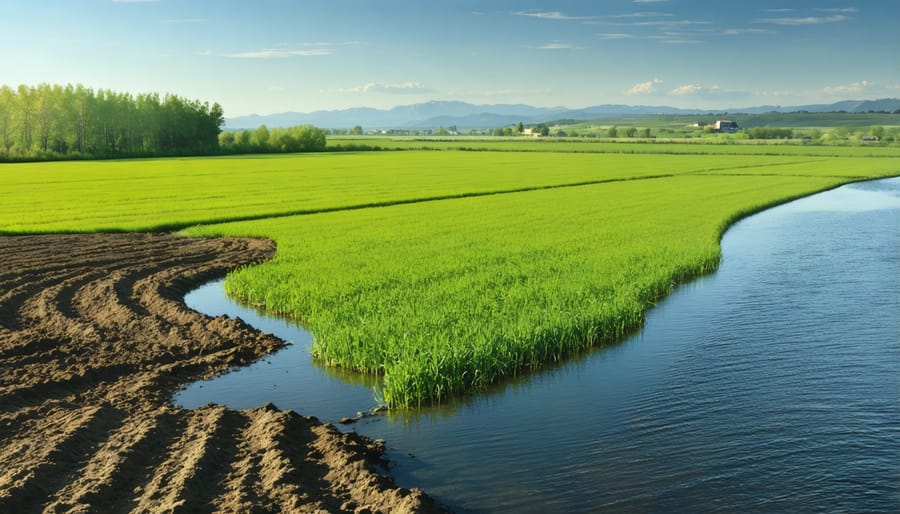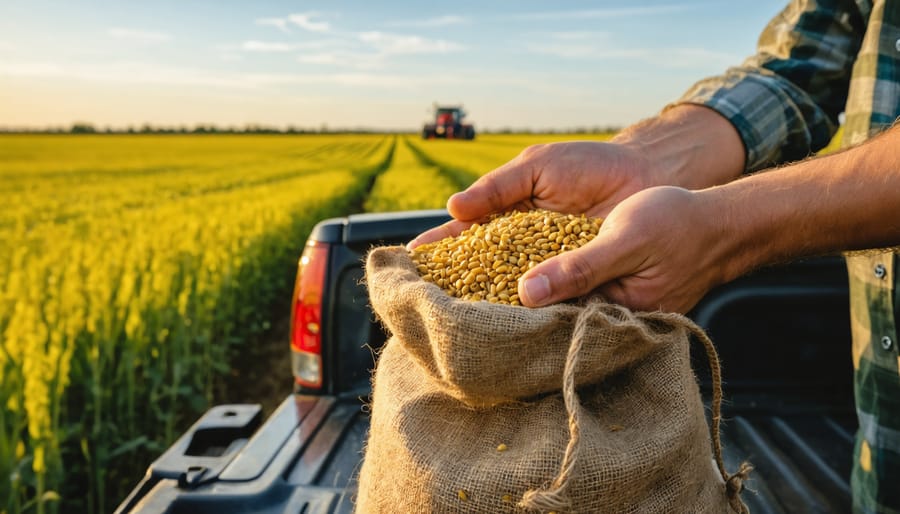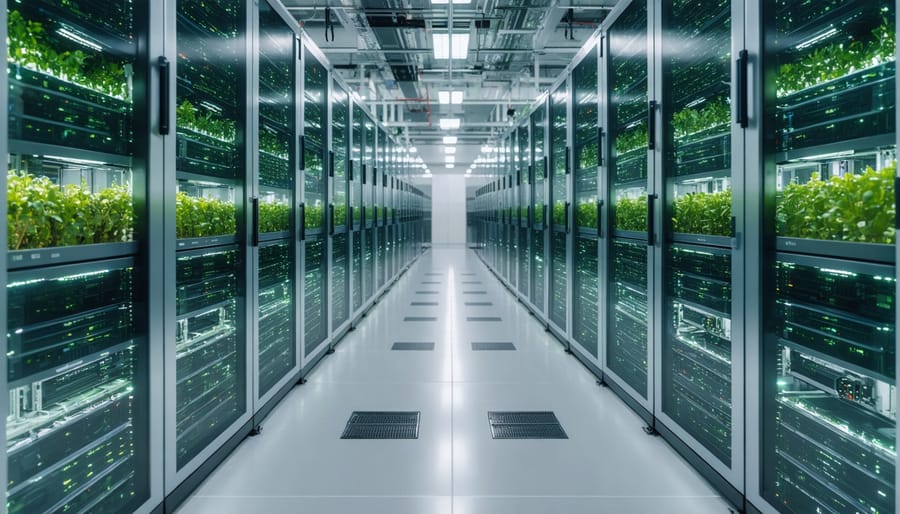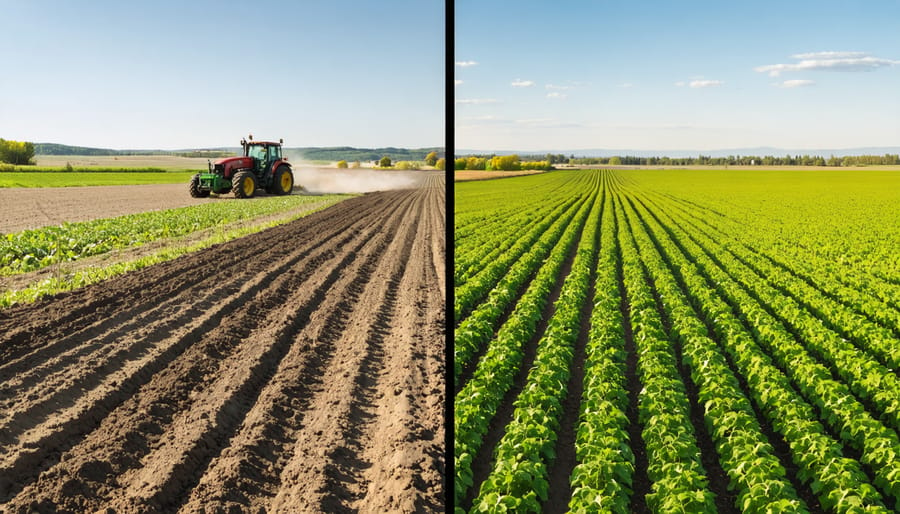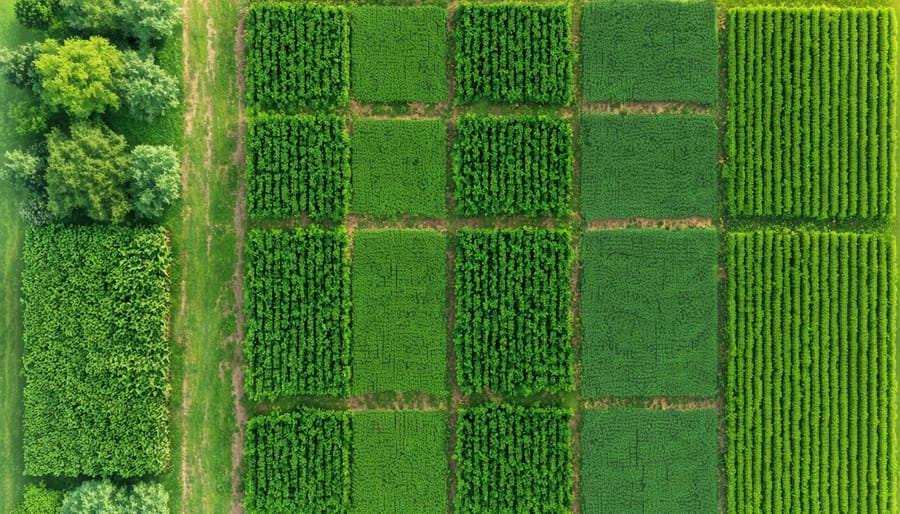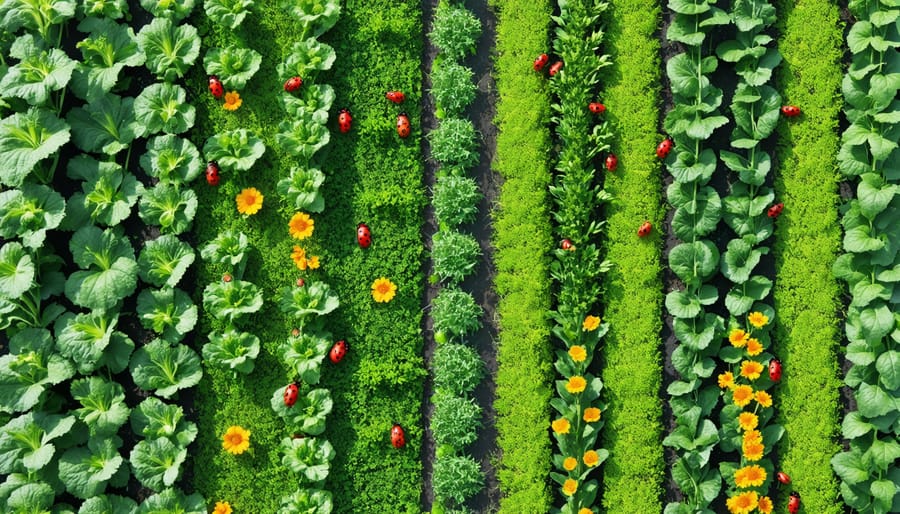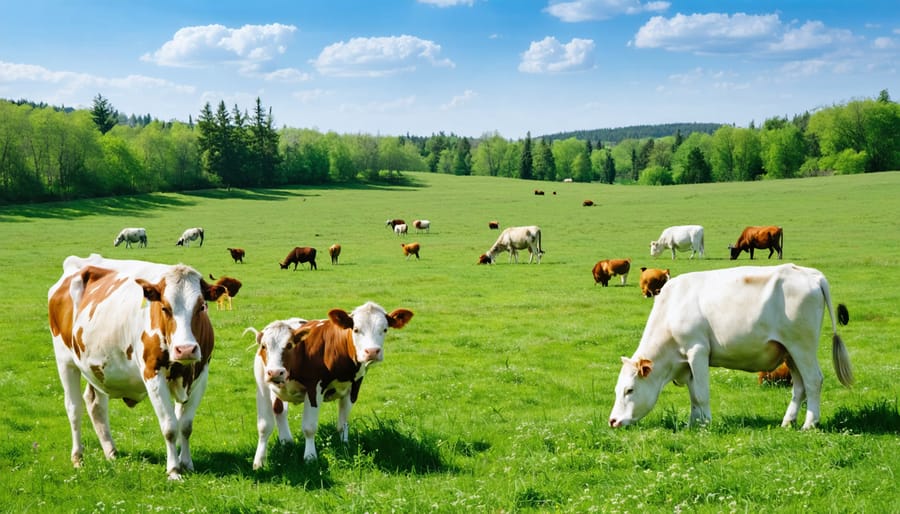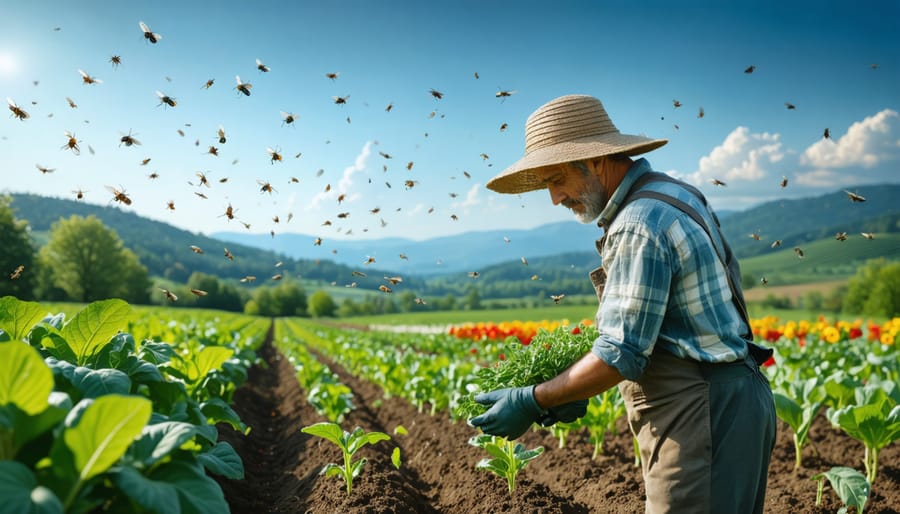Farming’s environmental footprint extends far beyond the field’s edge, shaping our landscapes, water resources, and ecosystems in profound ways. As environmental challenges in Alberta farming continue to evolve, agricultural practices significantly impact soil health, water quality, and biodiversity. Each season, Canadian farmers make crucial decisions that influence not only their yields but also the delicate balance of our natural systems. From soil erosion and nutrient runoff to greenhouse gas emissions, modern farming methods can either protect or strain our environment. Understanding these impacts empowers producers to adopt sustainable practices that safeguard both their operations and our ecological heritage. By examining the relationship between farming activities and environmental outcomes, we can develop targeted solutions that work for both agriculture and nature, ensuring a resilient future for Canadian farming communities.
Water Quality: Agriculture’s Primary Environmental Challenge
Nutrient Runoff: Understanding the Impact
Nutrient runoff from agricultural lands represents one of the most significant water quality challenges facing Alberta’s farming communities. When excess fertilizers and manure wash into our waterways during rainfall or snowmelt, they carry nitrogen and phosphorus that can trigger a cascade of environmental effects.
Here in Alberta, we’ve seen firsthand how nutrient loading affects our precious water resources. For example, in the Bow River Basin, monitoring stations have detected elevated phosphorus levels during spring runoff periods, particularly in areas with intensive agricultural activity. These nutrients, while essential for crop growth, can lead to excessive algae growth when they enter our waterways.
This process, known as eutrophication, can have serious consequences for aquatic ecosystems. As algae multiply rapidly, they can deplete oxygen levels in the water, creating challenging conditions for fish and other aquatic life. In some cases, this can lead to fish die-offs and affect the overall health of our water systems.
The economic impact on farming operations is also significant. When nutrients wash away, farmers essentially watch their investment flow downstream. Studies from Alberta Agriculture and Forestry estimate that farms can lose up to 15% of applied nutrients through runoff during heavy precipitation events.
However, it’s important to understand that nutrient runoff isn’t just about environmental protection – it’s about preserving our farming legacy for future generations. The good news is that many Alberta farmers are already implementing innovative solutions to manage nutrient runoff while maintaining productive operations. By understanding these impacts, we can work together to protect both our agricultural productivity and our water resources.
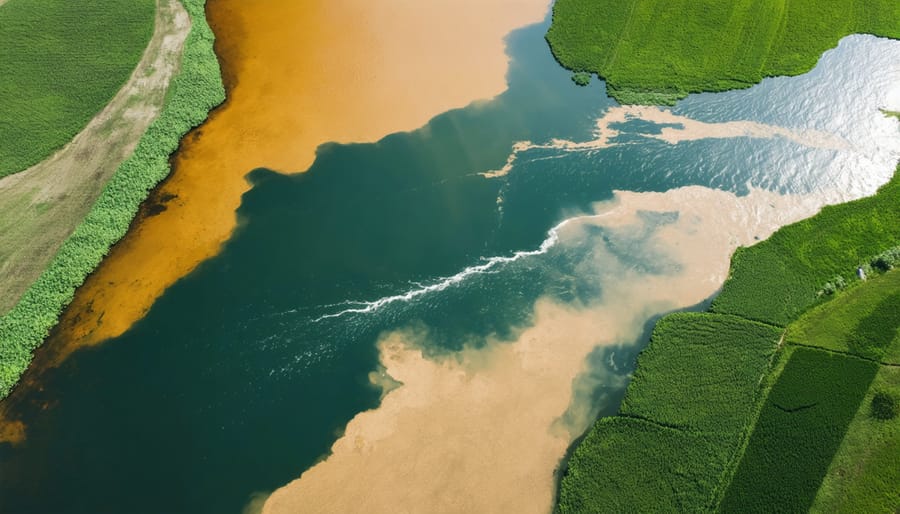
Soil Erosion and Water Contamination
One of the most significant environmental challenges faced by Alberta farmers is the interconnected issue of soil erosion and water contamination. When proper soil management strategies aren’t implemented, topsoil can be lost through wind and water erosion, leading to decreased soil fertility and increased sediment in nearby water bodies.
Here in Alberta, we’ve seen how conventional tillage practices can contribute to soil loss, with some regions experiencing losses of up to 6 tonnes per hectare annually. This eroded soil, along with agricultural inputs like fertilizers and pesticides, often makes its way into our water systems through surface runoff and leaching.
The impact extends beyond the farm gate. Sediment-laden runoff can increase water turbidity, while excess nutrients can trigger algal blooms in our lakes and rivers. For example, in the Bow River Basin, agricultural runoff has been identified as a significant contributor to water quality concerns.
However, many Alberta farmers are leading the way in adopting conservation practices that protect both soil and water resources. Zero-till farming, cover cropping, and riparian buffer zones have shown remarkable success in reducing erosion and filtering runoff before it reaches waterways. These practices not only protect our environment but also improve farm productivity and resilience.
Local success stories demonstrate the effectiveness of these approaches. The County of Lethbridge’s watershed stewardship program has helped farmers reduce soil erosion by 40% while maintaining crop yields. By working together and sharing knowledge, we can protect our valuable soil and water resources for future generations.
Current Solutions in Alberta’s Organic Farming
Buffer Zones and Riparian Management
Buffer zones and riparian areas serve as natural filters between farmland and water bodies, playing a crucial role in protecting Alberta’s water resources. These vegetated strips along streams, rivers, and wetlands help trap sediments, filter pollutants, and reduce nutrient runoff from agricultural operations.
For optimal effectiveness, maintain a minimum buffer width of 30 metres from permanent water bodies, though wider zones may be necessary depending on your land’s slope and soil type. Native vegetation within these zones, including grasses, shrubs, and trees, provides the best protection while supporting local wildlife.
Many Alberta farmers have seen success with implementing creative buffer solutions. For example, the Johnson family farm near Red Deer combines buffer zones with rotational grazing, allowing controlled livestock access during specific seasons while maintaining vegetation cover. This approach has improved their water quality while maximizing land use.
To establish effective buffer zones:
– Plant deep-rooted native species that thrive in your local climate
– Maintain year-round vegetation cover
– Consider incorporating forage crops that can provide additional farm income
– Monitor bank stability and adjust management practices as needed
The Alberta Environmental Farm Plan program offers technical support and potential funding for implementing buffer zone practices. Working with local watershed groups can provide additional resources and connect you with neighbouring farmers who have successfully implemented similar measures.
Remember, well-maintained buffer zones not only protect water quality but can also enhance farm biodiversity and provide long-term economic benefits through improved soil retention and reduced erosion.
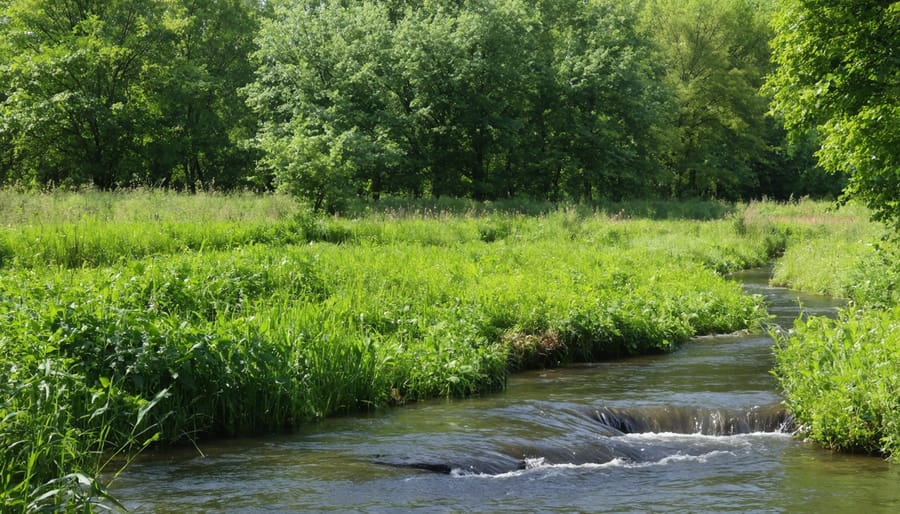
Organic Soil Management Techniques
Implementing effective organic soil management is crucial for reducing water pollution while maintaining productive farmland. By adopting sustainable farming practices, Alberta farmers can significantly decrease chemical runoff while improving soil health.
Cover cropping has proven particularly effective in our prairie climate, with crops like fall rye and clover helping to prevent soil erosion and naturally fix nitrogen. Local farmer Mike Thomson from Lacombe County reports a 40% reduction in fertilizer needs after implementing a three-year cover crop rotation.
Composting and the use of green manure are other valuable techniques that build organic matter while reducing the need for synthetic fertilizers. Creating windrows of crop residue and animal manure can provide nutrient-rich amendments that release slowly into the soil, minimizing leaching into water systems.
Conservation tillage, when combined with organic methods, helps maintain soil structure and beneficial microorganisms. Many Alberta farmers have successfully implemented strip-till systems that preserve organic matter while allowing for precise nutrient placement.
The key to success is starting small and gradually expanding these practices across your operation. The Alberta Organic Producers Association offers free soil testing and mentorship programs to help farmers transition to organic management methods, making it easier to protect our water resources while maintaining profitable operations.
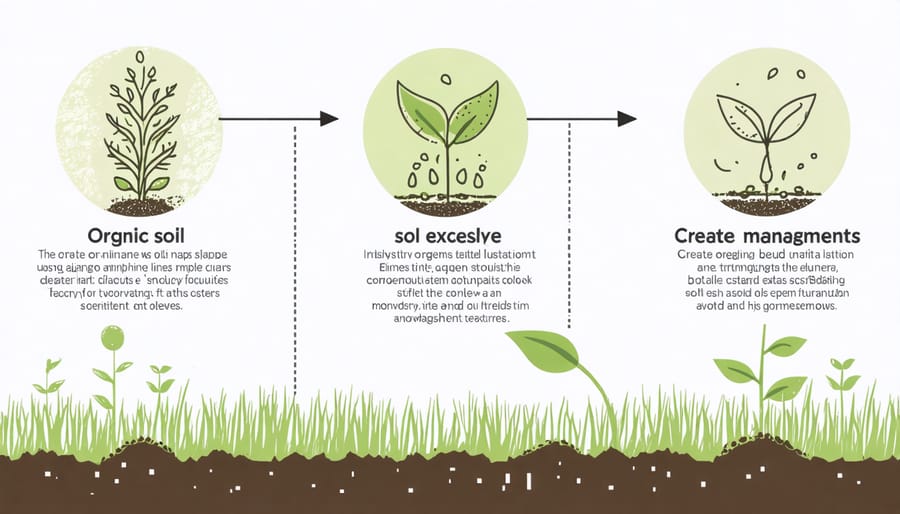
Policy Support and Resources
Environmental Farm Plans
Alberta’s Environmental Farm Plan (EFP) program offers farmers a practical framework to assess and improve their environmental stewardship. This voluntary, confidential program helps producers identify environmental risks and opportunities on their operations, aligning with organic certification requirements and sustainable farming practices.
The program guides farmers through a systematic review of their operation, focusing on key areas including water quality, soil health, and wildlife habitat. Participants receive workbooks and online resources to complete their assessments, with technical support available from qualified EFP technicians throughout the province.
Completing an EFP opens doors to various cost-sharing programs and grants, helping farmers implement recommended improvements. The Agricultural Research and Extension Council of Alberta (ARECA) administers the program, ensuring it remains relevant to local farming conditions and challenges.
Many Alberta farmers report that their EFP has helped them identify efficiency improvements, reduce input costs, and enhance their land’s long-term productivity while protecting natural resources. The program continues to evolve, incorporating new environmental research and best practices to support our farming community’s sustainability goals.
Financial Incentives for Water Protection
Several funding programs are available to support Alberta farmers in implementing water protection measures. The Canadian Agricultural Partnership (CAP) offers cost-sharing opportunities of up to 70% for projects that improve water quality and efficiency. Through the Environmental Stewardship and Climate Change Producer Program, farmers can access grants ranging from $5,000 to $100,000 for implementing beneficial management practices.
Local watershed stewardship groups frequently provide additional funding support, technical assistance, and resources for water protection initiatives. The Alternative Land Use Services (ALUS) program, active in several Alberta counties, compensates farmers for maintaining wetlands and implementing riparian buffer zones.
The Agricultural Water Conservation Program offers rebates for irrigation system upgrades and water-efficient technology implementation. Farmers can also access interest-free loans through the Alberta Financial Services Corporation for environmental improvements.
Free technical support is available through Alberta Agriculture and Forestry’s extension services, where specialists can help develop customized water management plans and complete funding applications. Many of these programs also offer workshops and educational resources to ensure successful project implementation.
For specific project support, contact your local agricultural fieldman or watershed coordinator who can guide you through available options and application processes.
As we’ve explored throughout this article, farming’s environmental impacts in Alberta present both challenges and opportunities. Water quality remains a primary concern, but our agricultural community has shown remarkable resilience and innovation in addressing these issues. Through the adoption of sustainable practices, investment in modern technology, and participation in provincial conservation programs, Alberta farmers are leading the way in environmental stewardship.
Looking ahead, the future of farming in our region depends on maintaining this momentum. With continued collaboration between farmers, agricultural experts, and government agencies, we can further reduce our environmental footprint while maintaining productive and profitable operations. Remember, every step toward sustainable farming practices, no matter how small, contributes to preserving our land and water resources for future generations of Alberta farmers.
Together, we’re building a more sustainable agricultural future that balances environmental protection with farm productivity and prosperity.

